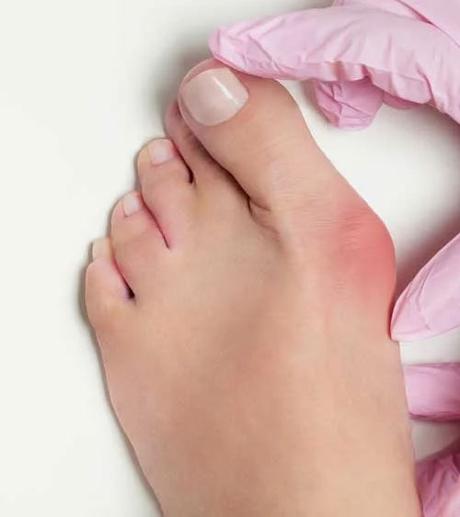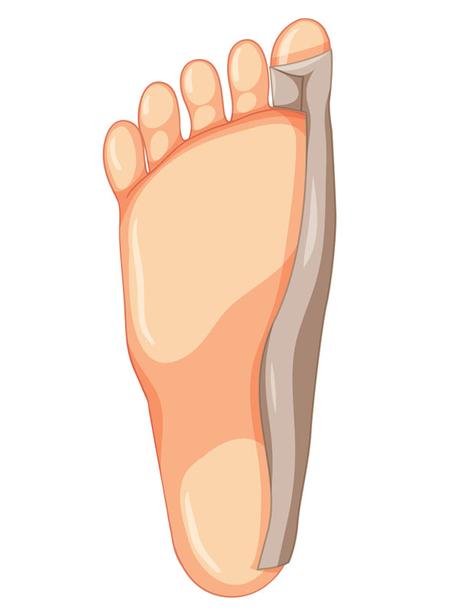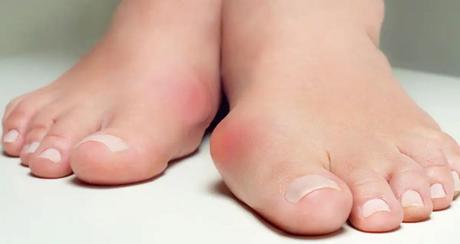Big toe deviation, or hallux valgus, is the most common foot deformity; This condition is also called big toe bunion. Its cause is the growth of an extra bony protrusion outward, in the big toe. The pressure applied to the foot while walking, standing for a long time, and wearing tight shoes can cause the big toe to deviate outward.
Hallux valgus, in addition to being a cosmetic problem, can be very painful and negatively affect the quality of life. This complication can make walking impossible in advanced stages if not treated. To treat crooked big toes at home, it is first recommended to wear suitable shoes and use special pads and toe spacers.

If these methods do not reduce the deviation of the big toe, then surgery is needed for treatment. Non-surgical treatment methods are much more effective in the early stages, which is why early referral and rapid initiation of treatment are very important. hallux valgus has a high prevalence in society; This complication is more common in women and in the elderly. Also, big-toe bunions are more common in people with flat feet or hammer toes. In the following, we will first explain in more detail what the deviation of the big toe is, and then we will learn more about the symptoms and treatment methods of the deviation of the big toe.
What Is The Cause of A Crooked Big Toe?
There is no specific reason for hallux valgus. It can be said that the simultaneous effect of several different factors plays a role in causing this disease. Genetics is one of the effective factors in getting it. Some genes make ligaments more flexible and thus increase the probability of bunion. For this reason, this complication has a hereditary and family background to some extent.
Wearing ill-fitting and tight shoes, standing for a long time, and putting pressure on the foot while walking can be the cause of hallux valgus and deviation of the big toe in those who have a hereditary background of the disease. Having some risk factors also increases the probability of getting it; These factors are:
- Family history of foot abnormalities, such as bunions and flat feet
- Leg injury
- Inflammatory diseases that affect the joints of the feet, such as rheumatoid arthritis.
Symptoms of Deviation of The Big Toe
A bunion is a Greek word meaning turnip. A big toe bunion, as the name suggests, is a turnip-like bump on the outside of the big toe that can be red, swollen, and painful. The following are its symptoms:
- Inability to bend the neck of the big toe, or severe pain and burning sensation when trying to bend it
- Inability to wear normal shoes
- Thickening of the skin or corn on the feet
- Hammer toe (toughness and pain in the tendons of the big toe)
- Numbness in the big toe
Complications of Hallux Valgus
Having hallux valgus, in addition to the painfulness of this inflammation and complications such as the inability to wear normal shoes, will also have side effects. Research shows that suffering from this condition can lead to the following problems:
- Creating bone spurs
- Bursitis (inflammation of the fluid-filled sacs around the joints)
- Hammering fingers
- Arthritis and joint inflammation

What Is Bunion or Hallux Valgus Disease?
If you search for pictures of hallux valgus on the internet, you will come across pictures of bunions. A bunion is a bony protrusion that occurs on the outside of the big toe. This deformity is caused by years of pressure on the big toe joint (metatarsophalangeal joint or MTP) and gradually causes the big toe to deviate outwards. In medical terms, this condition is called hallux valgus. Over time, hallux valgus can cause pain, swelling, and arthritis in the big toe joint.
Bunions can occur in one or both feet, and as we said, this condition is more common in women and the elderly. Generally, one out of three people suffers from hallux valgus.
Treatment Methods for Hallux Valgus
Probably, this question has also occurred to you, how is the deviation of the big toe treated? Unfortunately, once formed, bunions do not go away, and therefore hallux valgus treatment focuses on symptom management and relief. This treatment is divided into two parts: home and medical. To treat crooked big toe at home, you can try the following methods:
- Bunion pads and tapes: Over-the-counter pads designed to treat bunions can reduce inflammation and reduce pain. Medical tapes can also be used to keep the foot in the correct position.
- Changing shoes and using the right shoes: To reduce the pressure on the toes, you can use shoes with wider toes. You can also widen the toes of your old shoes with the help of special tools.
- Analgesics: The use of nonsteroidal anti-inflammatory drugs (NSAIDs), along with the use of ice compresses, can help reduce pain and inflammation at the site of the injury.
If the above methods do not work for you, the doctor will suggest one of the following methods or, in combination, follow a series of treatments to achieve the desired result:
- Orthopedic shoes: special orthopedic shoes can help to correct the foot position and reduce the deviation of the big toe. Wearing a splint overnight can also help improve and reduce symptoms in some people.
- Physiotherapy: Massage, physiotherapy, and ultrasound therapy help reduce pain and inflammation caused by bunions by reducing soft tissue adhesions. Some exercises can help improve the muscle strength around the bunion and thus improve the natural position of the foot.
- Local injection of steroid drugs: Local injection of steroid drugs can help reduce pain and inflammation in the affected joint. But if steroids are injected too often or injected into the joint itself, it may cause complications. Steroid injections are often used in severe cases of the disease and when there is no adequate response to other treatments, to delay or prevent surgery.
- Surgery: Surgery is recommended in cases where non-surgical treatments do not help to improve the patient’s condition and the severity of the lesion is such that it is difficult for the patient to walk. The surgery performed to treat hallux valgus is called a bunionectomy. During this surgery, the doctor removes the bunion and then realigns the toes to correct the misalignment caused by the growth of the bunion.

The treatment of Hallux Valgus
In this article, we answered the question of what is hallux valgus of the foot is and examined its home and medical treatments. We have seen that hallux valgus or deviation of the big toe is a very common complaint that is largely hereditary and familial. Big toe deviation can cause pain and inflammation in the MTP joint of the big toe, and in advanced cases, it can even make walking difficult. The treatment of this problem is done in two ways, surgical and non-surgical.
Treatment of hallux valgus without surgery includes measures such as the use of special medical pads and tapes, the use of orthopedic shoes, the use of drugs such as NSAIDs to reduce pain and inflammation, and finally, local injection of corticosteroids. If there is no response to treatment, surgery should be performed. Note that the lack of treatment can lead to serious complications such as arthritis.

